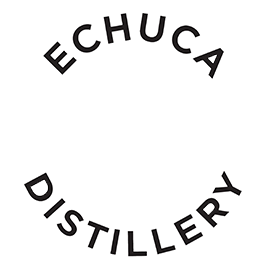Definition
Here at Echuca Distillery, we know there is much more to gin than the distilling process. Gin has a long and interesting history, a complex reputation and many stories to tell.
The Urban Dictionary claims no other liquor provides for the creation of so many classic cocktails … without Gin, the King of cocktails, the Dry Martini would not exist.


HOW IS GIN MADE?
Gin is an un-aged liquor made in Australia by distilling, derived from grape spirit. Its flavour and aroma comes from juniper berries, coriander seed, and other botanlcals plus herbs and spices. These can be either steeped in the spirit before distillation or alternatively added to a gin basket within the vapor trail. Echuca Distillery uses both methods depending on the outcome required. The gin is stored in glass, earthenware containers but does not mature in these. The magic happens in the copper pot still (like ‘Lavender’) and then matured in stainless steel tanks.
“A bar without gin is like an Italian kitchen without pasta” – unknown.
A short history of gin…
- Used for medicinal purposes in the 1600s, gin sparked riots in the 1700s and fuelled underground distilleries in the 1920s
- Classification of gin is based on strength, distillation process, and the presence of the juniper berry
- Gin differentiates into four separate categories: juniper flavoured spirit drinks, gin, distilled gin, and London gin. The differences exist in the restrictions on colouring, additional flavourings and strength, with London gin dubbed as the most premium.
- Gin is the core spirit of many classic cocktails including the Martini and Negroni, as itscomplex botanicals only truly emerge when mixed with other ingredients.
- The immergence of artisanal gin distilleries worldwide (and changes to distillation laws) has seen botanicals used to enhance character.
- Ingredients and infusions used in artisan gin distilling include lavender, olive, nettles, dandelions, almond shells, and even green ants.
- Australia is leading the way using locally grown flora to create what is now known as ‘Bush Gins’. Indigenous botanicals include wattle seeds, cassia bark, Angelica root, Australian bush tomato and citrus-like grapefruit.
- There are now 80 craft distilleries across Australia
- Consumer demand for local, artisan or hand-crafted spirits is on the rise
- 90% of Australian craft distilleries are based in rural areas
- Since 2010 gin consumption has increased by 36%, quickly catching vodka as the most popular white spirit
- The Australian gin industry is set to more than double in the next two years
- Consumers have developed an appetite to drink better rather than more
Fun Facts: Gin and her many tales
How many tears in a bottle of gin?
“How many tears in a bottle of gin?” – Australian singer songwriter Paul Kelly once sang.
Gin has a reputation of being a tearjerker, however she is not alone, as research shows that any spirit is more likely to trigger tearfulness when compared with wine and beer. This is why we encourage gin lovers to drink less and enjoy more!
Whether you believe Paul Kelly or not, we recommend you enjoy our gin in moderation to stay merry.
Does gin and tonic keep mosquitos at bay?
Accordingly to a UK based journal, gin and tonic first became popular in the British colonies as the quinine in tonic water was said to be a potent deterrent to malaria-carrying mosquitos.
Gin was mixed with tonic to improve the bitterness of tonic water and is still a firm favourite for many during the balmy summer months and tropical locations around the world.
However, recent studies have dispelled this ‘preventative’ theory, as the quinine present in tonic is most likely not enough to repel mosquitos.
But don’t let that stop you from enjoying a G&T or two on a warm summer evening though!
